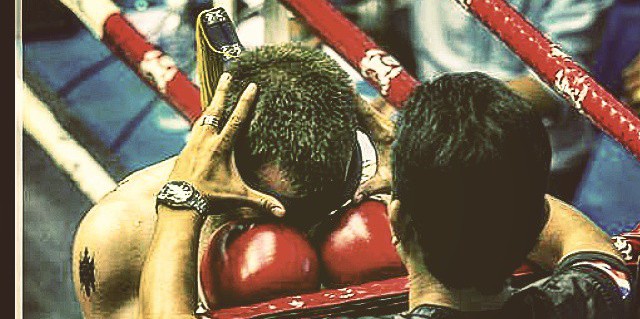Strength & Conditioning for Muay Thai
Strength and conditioning, and in particular lifting weights, is a divisive subject in the world of muay thai. Many claim that lifting is unnecessary and even detrimental. The oft repeated fears about becoming “slow and bulky” still abound. This line of thinking, however, is rooted in a lack of understanding of the various applications of a true strength and conditioning program. Sure, following a traditional bodybuilder style routine- long hours doing a huge volume of isolation lifts- won’t produce the best results for a nak muay. A properly targeted and planned program specific to the demands of the sport, on the other hand, could make all the difference in a fight. If it was possible to hit harder and faster, and maintain this power through a full fight, why wouldn’t you want to take advantage of this?
I’m a big believer in planned training sessions with a specific outcome in mind, rather than simply stringing together a random bunch of exercises with the simple aim of “getting tired.” More is not necessarily better. Strength and conditioning, as an accessory to the copious amounts of skill work that a nak muay must go through (pad work, bag work, sparring, clinch), should elicit the greatest effect for the smallest effort. Spend hours killing yourself in the weight room, and your skill training will suffer. If you’ve ever tried to kick pads after a brutal session of heavy squats or deadlifts, you know what I mean.
Your skill work should always come first. The vast majority of gyms and camps in Thailand do little to no real strength and conditioning work, sticking to the traditional grind of running, hitting the pads and bags, sparring and clinching. Most lack the knowledge and facilities to put a program in place, especially poorer rural camps. Yet they consistently produce the best fighters in the world. Much of this can be put down to the fact that Thai fighters generally begin fighting professionally at a much younger age than western fighters, and fight much more often. Some gyms are opening up to the thoughbenefits of modern sports science, and it seems inevitable that the trend will catch on in the coming years. Just think of the change in former 3x Lumpinee stadium champion Yodsanklai Fairtex in recent years. Once known for struggling with his weight and often coming into fights looking a little puffy, the hard-hitting southpaw has looked ripped every time he’s come to the ring since his victory over Kem Sitsongpeenong. No doubt, the influx of foreigners at Fairtex Pattaya has helped to move Yod towards a proper S&C program.
Current Lumpinee champion Pakorn recently appeared in a promotional video for Yokkao at the Bangkok CrossFit complex. At the start of the video, Pakorn even says he doesn’t think the whole thing will be much use to him. Why would he? He’s already one of the best fighters in the world based off the staple Thai-style training. Afterwards, however, he admits that his eyes have been opened to the value of modern S&C training.
In the next post, I will look at what exactly an S&C program for a muay thai fighter should look like.
Read the next post in the series here!

